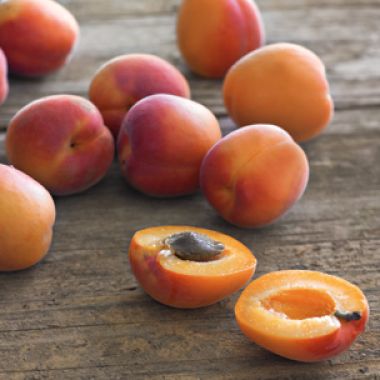All About Apricots

Most apricots are canned, made into preserves or dried, but once you experience a perfectly ripened fresh specimen, you will look forward to their brief season. Native to northern China, where they still grow wild, apricots are at their peak in July. They do not travel well, being easily bruised, so they are not as widely available as peaches or nectarines. They are small, too, less than half the size of a peach.
Selecting
Look for fresh apricots with golden color. When fully ripe, they will give slightly when gently pressed, similarly to a peach. Dark green unripe fruit will never ripen correctly, but light green unripe ones may ripen satisfactorily.
Storing
Eat ripe apricots as soon as possible. If you must store them, refrigerate them for up to 2 days. Those that are not fully ripe should be left at room temperature to ripen.
Preparing
If a recipe requires peeled apricots, first cut an X in the blossom end of the fruit to help you remove the skin quickly. Plunge the fruit into a large pot of boiling water for 20 to 60 seconds, then quickly transfer the fruit to a bowl of ice water. As soon as the apricots are cool, remove them from the water and peel away the skin using your fingers or a small paring knife.
Adapted from Williams-Sonoma Kitchen Companion: The A to Z Guide to Everyday Cooking, Equipment and Ingredients (Time-Life Books, 2000)